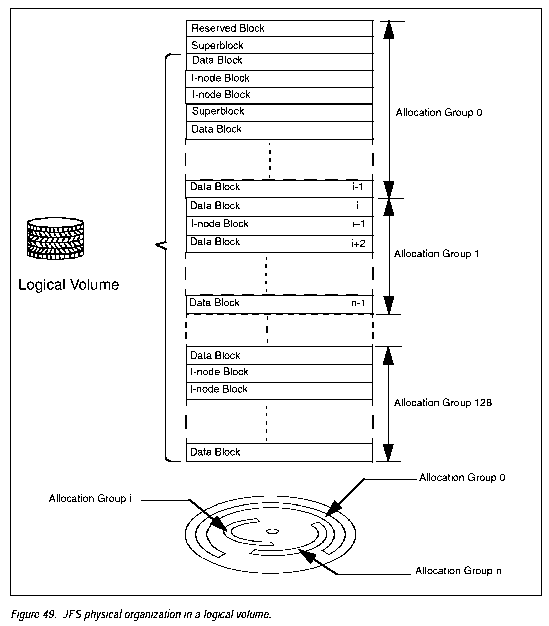|
|
 |
 |
 |
 |

Notes on OS/2 Disk Usage III - The Journaled File System (JFS)
By: Walter Metcalf
When Warp Server for e-Business (WSeB) was first announced, one of the things users were most excited about
was that IBM had decided to port its advanced Journaled File System, originally developed for the AIX system,
IBM's large Unix clone, to OS/2. Unfortunately, WSeB was priced so that it was generally inaccessible to most
home and small business users, and consequently they could do little more than drool over this sophisticated
software. Then when the Convenience Packages for Warp 4 were announced and IBM revealed that they would contain
JFS, this feature quickly became one of the most popular and waited-for features in the package. (Note:
LVM and JFS will also be available without extra charge in eComStation.) The purpose of this article is to
give a very brief overview of the current file system situation, and to describe JFS' main features. In the next article we'll look at
how it compares with OS/2's other file systems, and how it has been
implemented in OS/2. Before we continue, however, it is important to note that all the material in this article
taken from Warp Server for e-Business documents, or said about WSeb regarding the Logical Volume Manager or
the Journaled File System, will apply equally well to the eComStation (eCS) family of products.
JFS Features
Until now, the best file system available for OS/2 was the High Performance File System (HPFS). When it was
first developed, it was truly innovative, and it is still far superior to the File Allocation System (FAT)
and any of its versions. However HPFS has failed to keep up with the times, and is becoming obsolete. In
particular, HPFS has the following significant limitations:
- IBM shares the copyright for HPFS with Microsoft;
- HPFS is a 16-bit system;
- HPFS uses a maximum 2MB cache;
- HPFS has a 2GB maximum file size.
In an attempt to rennovate HPFS, IBM created a 32-bit version of HPFS called HPFS386 for its server products.
However this product was never widely distributed. We can only speculate on the reasons, but it may be that
HPFS386 failed to overcome some of the other more basic restrictions inherent in HPFS, including the copyright
issue. Clearly IBM needed, or at least wanted, something completely new. For this they developed an OS/2
version of the AIX Journaled File System. Let us now look at some of the new features JFS brings to OS/2 that
has users so excited.
- A truly 32-bit system;
- Maximum volume size 2 terabytes (=2,048 gigabytes!)
- Maximum file size 2 terabytes (=2,048 gigabytes!)
- This is especially important for large database and server users.
- In conjunction with LVM, JFS allows dynamic volume expansion. In other words, volumes can be
increased in size "on the fly"!
- Maximum cache size is the amount of available physical memory.
- Uses database journaling techniques to record changes sequentially in a special log, so that in case
of system failure, data can be restored much faster than was possible under previous
file systems.
The following paragraph was taken from Quick Beginnings1 and does a
good job of demonstrating the amount of effort IBM put into enhancing JFS as they created the OS/2
implementation:
The Journaled File System (JFS) is a file system that uses database journaling techniques, such as recording
file changes sequentially, to maintain file system integrity. JFS provides a high-performance, 32-bit file
system implementation for the OS/2 Warp Server for e-business environment. JFS is tailored primarily for the
high throughput and reliability requirements of servers from single processor systems to advanced
multiprocessor and clustered systems where performance and reliability are desired. JFS uses the proven
technology of the existing AIX JFS implementation, and it is enhanced to provide support for extended attributes,
unicode names, and case-insensitive searches. Also a number of significant features are added to JFS to make
it more competitive and scalable, resulting in fundamental changes to the file system layout. These features
include extent-based allocation, sorted directories, and dynamic space allocation for file system objects.
To complete our description of JFS features, I have included below a diagram of the JFS disk layout.
2 Refer to this redbook for complete details on each component of the diagram. In fact,
for anyone who intends to spend a substantial amount of time using the technical aspects of WSeb (or eCS)
this book should be considered a must.

—Walter Metcalf
For Further Reading: Inside OS/2 Warp Server for e-Business, Chapter 4; IBM Redbook SG24-5393-00 Very complete and detailed treatment of all aspects of LVM as used in WSeB. If you will be spending a substantial amount of time with technical aspects of OS/2 you should seriously consider purchasing the hard copy version of this work. A Short Introduction to LVM and JFS.
Brief overview, but very helpful as an introduction, to both JFS and LVM as used in eComStation JFS is covered in considerably more detail than LVM.
Notes
1 Quick Beginnings: Installing OS/2 Warp Server for e-business, by IBM; Part no. ct7s2na; Published in U.S.A.; pp. 20-21.
2 Inside OS/2 Warp Server for e-business, Indran Naick, et. al.; IBM Redbook catalogue no. sg24-5393-00; p. 126.
Unless otherwise noted, all content on this site is Copyright © 2004, VOICE
|
 |
 |
 |
 |
|
|











